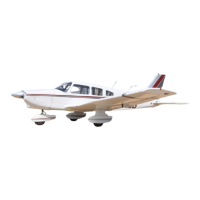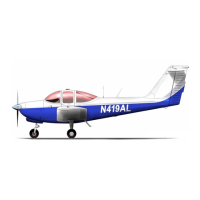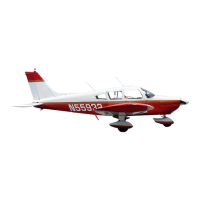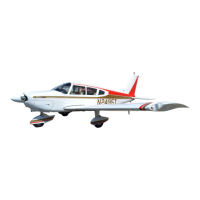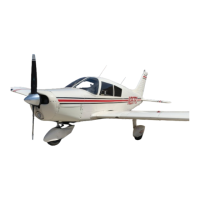THE NEW PIPER AIRCRAFT, INC.
PA-32-301FT / 301XTC
MAINTENANCE MANUAL
PAGE 2
Jun 1/03
4J16
73-10-00
B. Cleaning and Inspection
(1) Clean the nozzle with acetone or equivalent and blow out all foreign particles with compressed
air in the direction opposite that of fuel flow. Do not use wire or other hard objects to clean
orifices. Refer to Lycoming Service Instruction No. 1275, latest revision.
(2) Inspect the nozzle and cylinder threads for nicks, stripping or cross-threading.
(3) Inspect for battered or rounded hexagons.
(4) A test procedure for air bleed nozzles is described in Lycoming Service Instruction No. 1275,
rev. B or latest revision.
C. Installation
CAUTION: WHEN INSTALLING THE FUEL NOZZLES, BE CAREFUL AS YOU APPROACH THE
CYLINDERS TO AVOID DAMAGING THE CYLINDERS AND FUEL NOZZLES.
(1) Installation and torque procedures for the fuel nozzles are per Lycoming Service Instruction
No. 1275, rev. B or latest revision.
(2) Carefully install the nozzle, using the correct size deep socket.
(3) Connect the fuel line to the nozzle.
(4) Install the lower engine cowl.
3. Idle Speed and Mixture Adjustment
A. Start the engine and warm up in the usual manner until oil and cylinder head temperatures are
normal.
B. Check magnetos. If the “mag-drop” is normal, proceed with idle adjustment.
C. Set throttle stop screw so that the engine idles at 700 RPM ( ± 50 RPM ). If the RPM changes
appreciably after making the mixture adjustment during the succeeding steps, readjust the idle
speed to the desired RPM.
D. When the idling speed has been stabilized, move the cockpit mixture control lever with a smooth,
steady pull toward the “Idle Cut-Off” position and observe the tachometer for any change during the
leaning process. Caution must be exercised to return the mixture control to the “Full Rich” position
before the RPM can drop to a point where the engine cuts out. An increase of more than 10 RPM
while “leaning out” indicates an excessively rich idle mixture. An immediate decrease in RPM (if not
preceded by a momentary increase) indicates the idle mixture is too lean.
E. If the above indicates that the idle adjustment is too rich or too lean, turn the idle mixture
adjustment in the direction required for correction, and check this new position by repeating the
above procedure. Make additional adjustments as necessary until a check results in a momentary
pick-up of approximately 5 (never more than 10) RPM. Each time the adjustment is changed, the
engine should be run up to 2000 RPM to clear the engine before proceeding with the RPM check.
Make final adjustment of the idle speed adjustment to obtain the desired idling RPM with closed
throttle. The above method aims at a setting that will obtain maximum RPM with minimum
manifold pressure. In case the setting does not remain stable, check the idle linkage; any
looseness in this linkage would cause erratic idling. In all cases, allowance should be made for the
effect of weather conditions and field altitude upon idling adjustment.

